Roasted Vegetables with Pantry Staple Romesco Dipping Sauce
Alex Raij’s Paper Bag Salad
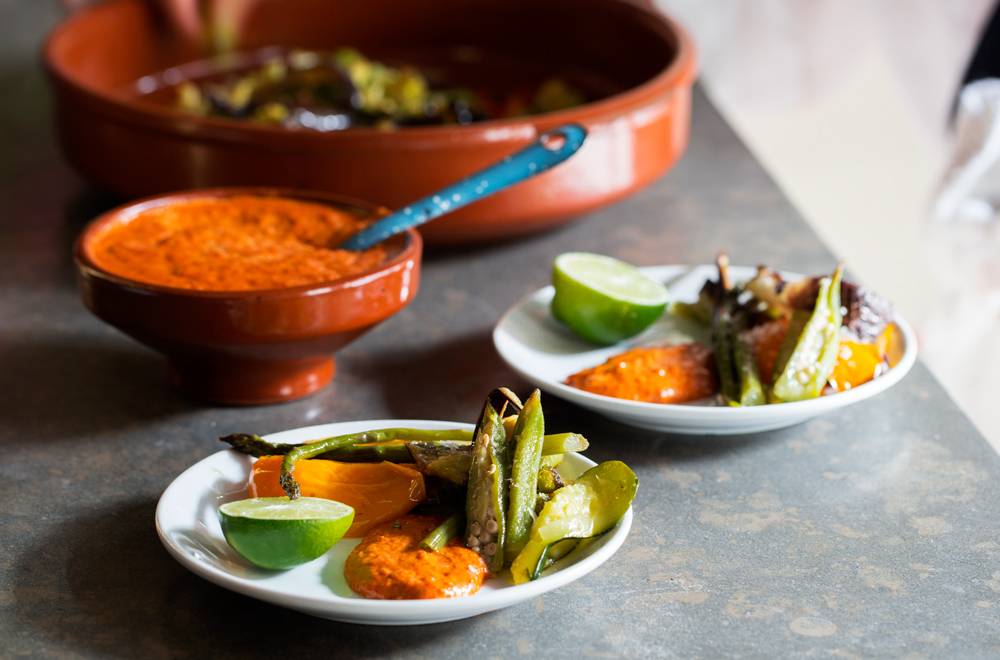
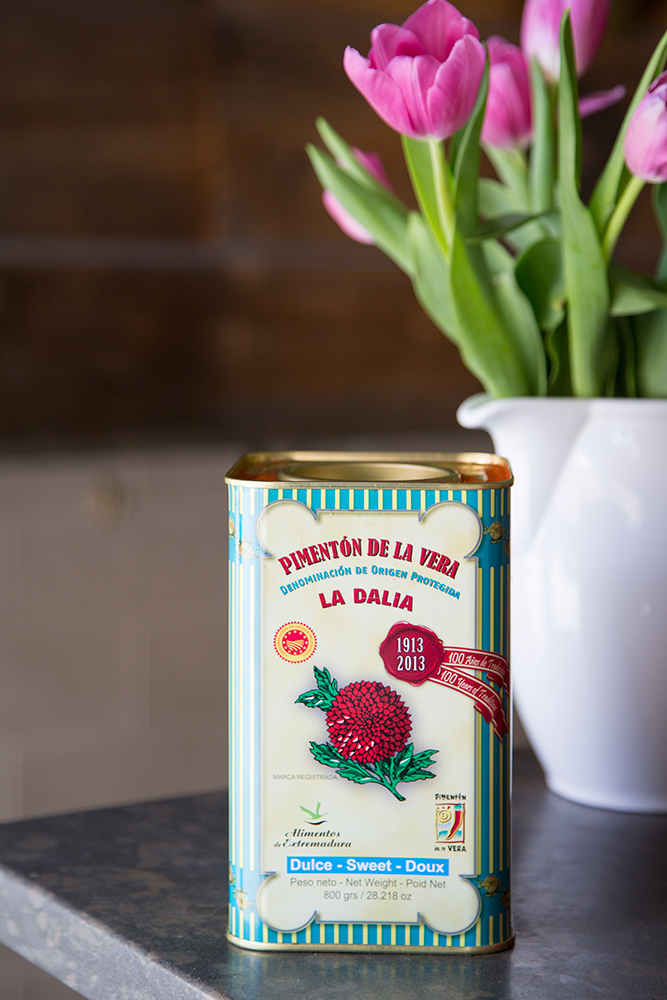
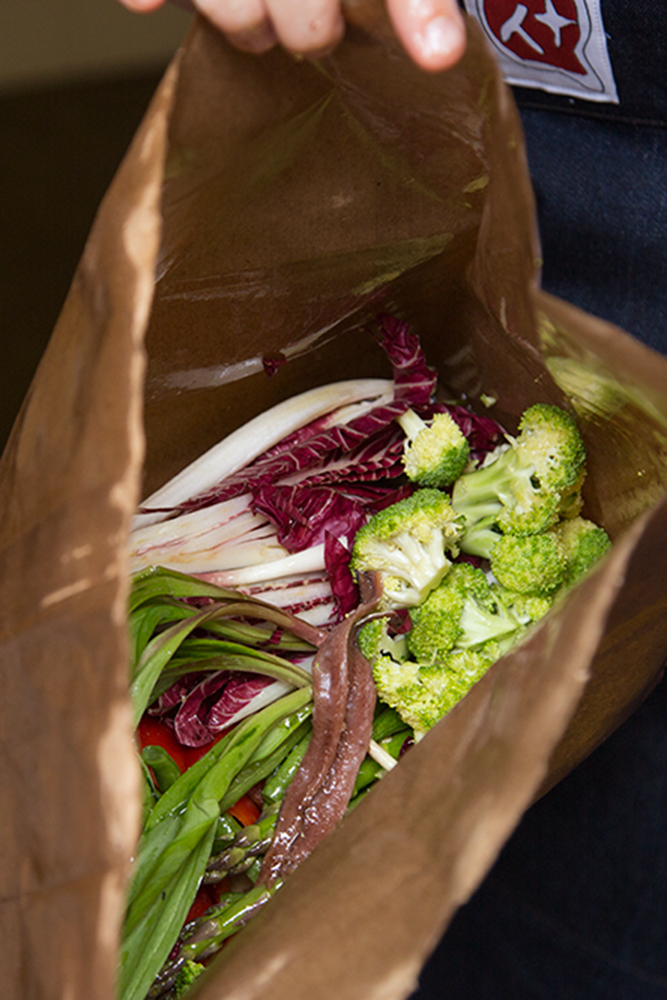
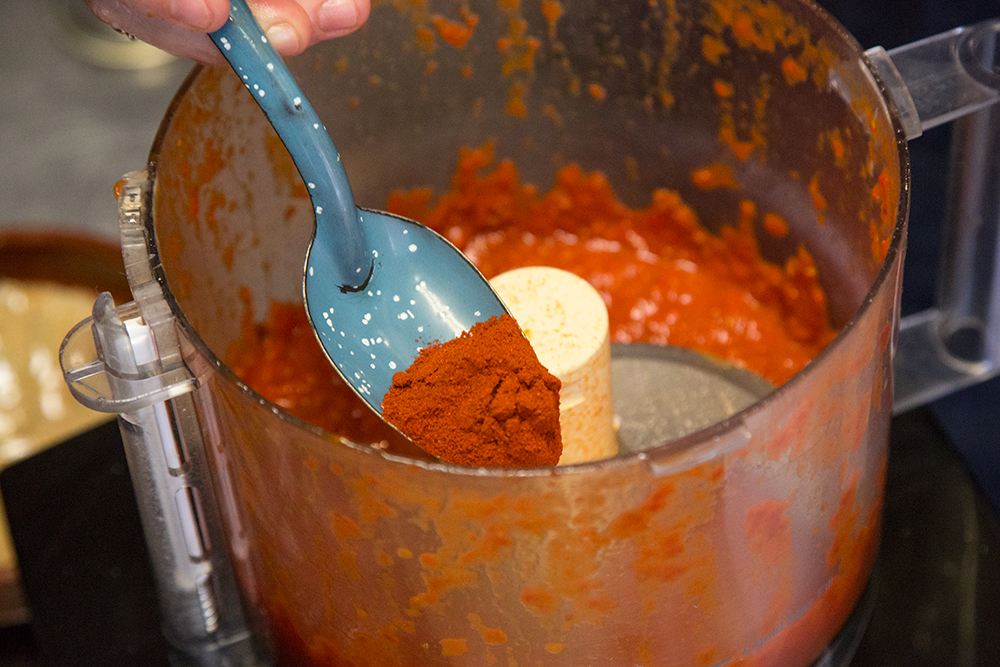
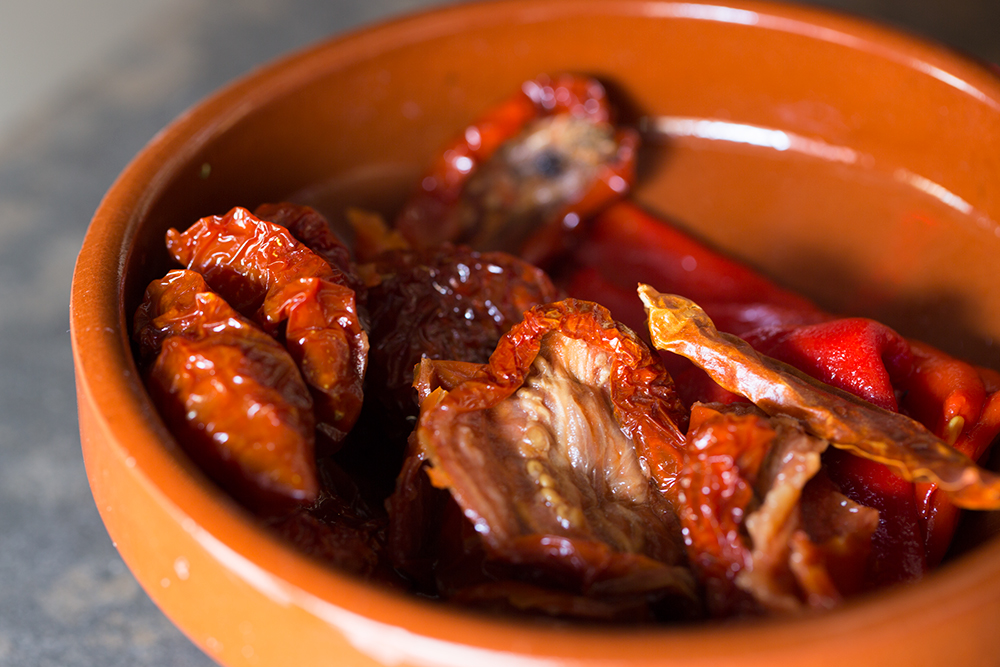
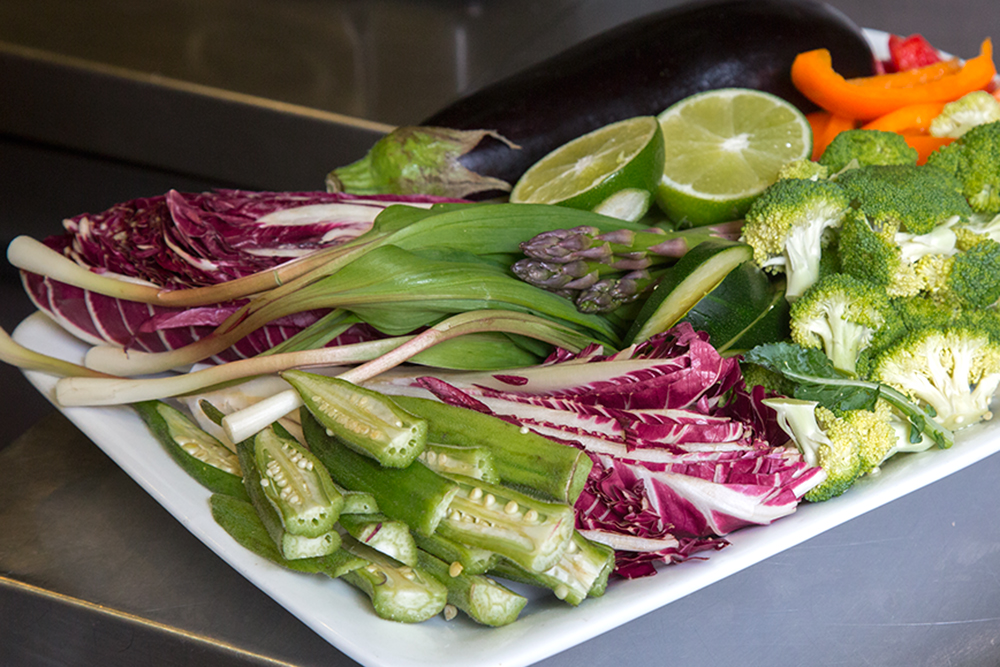
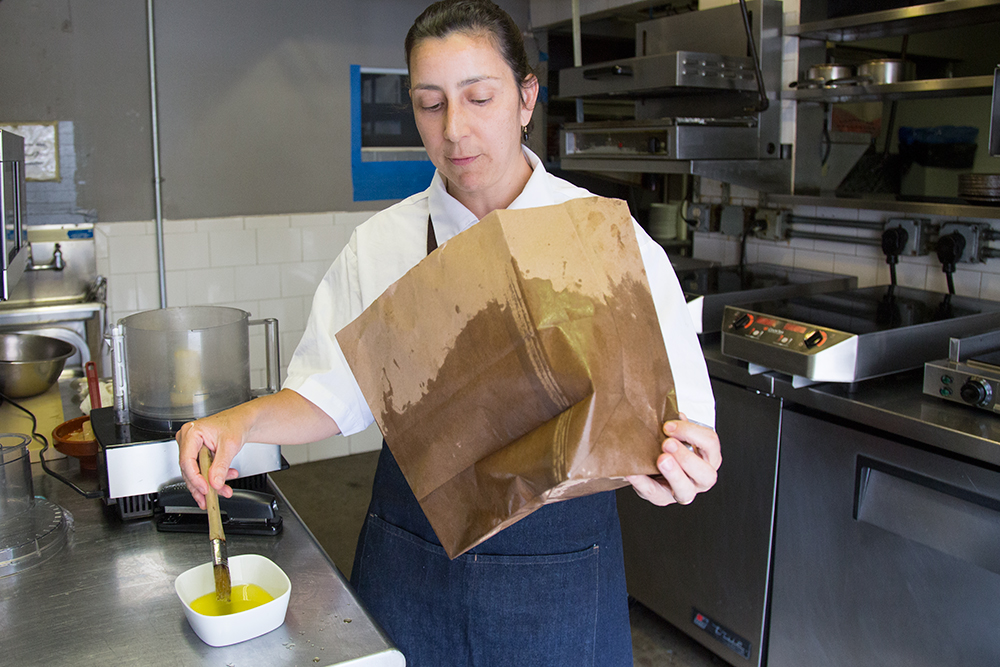
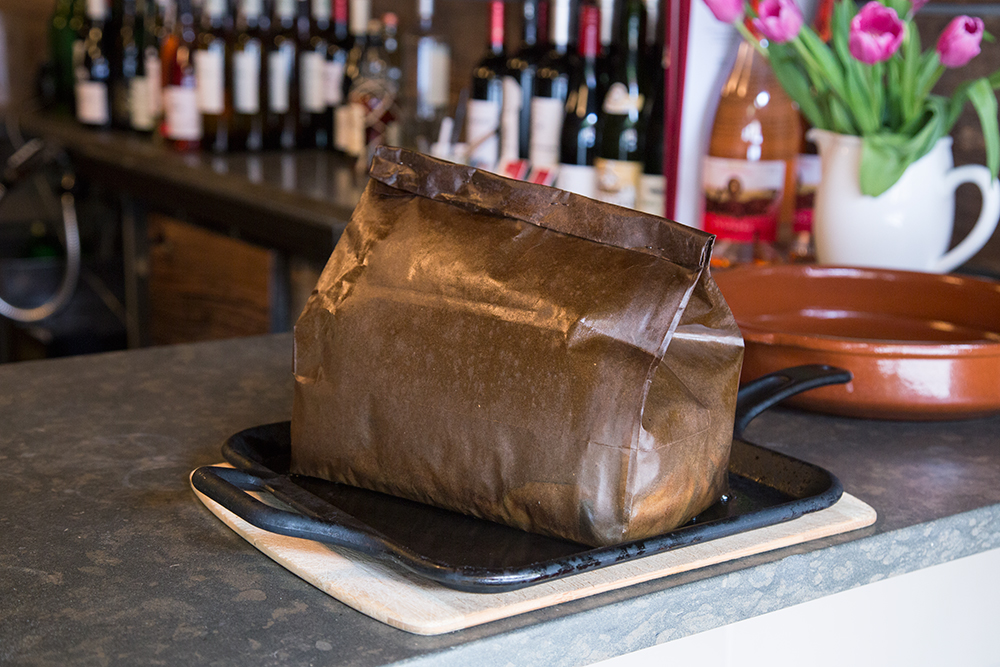
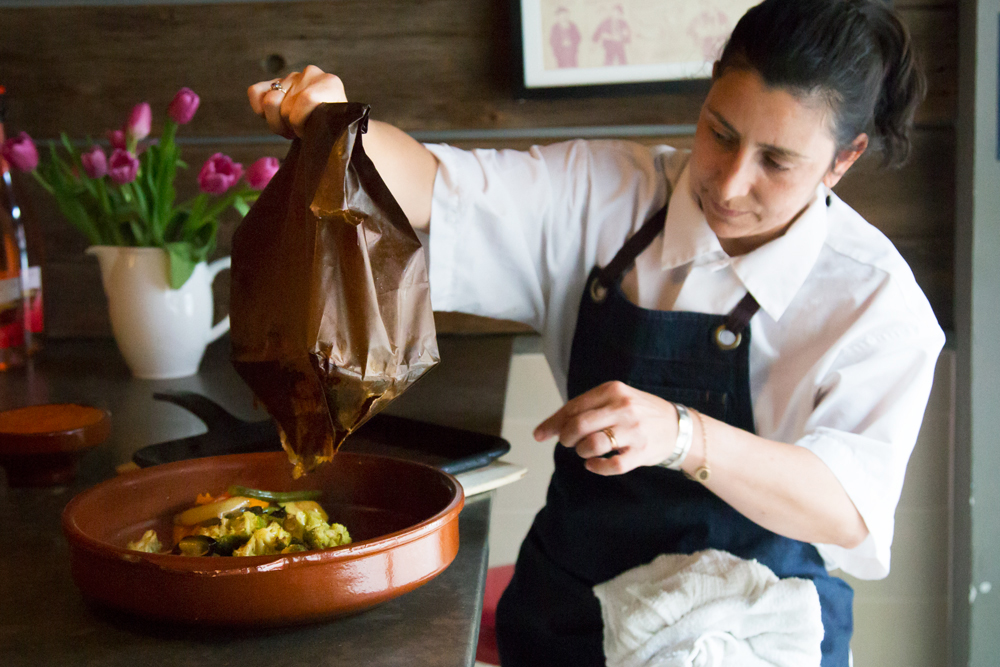
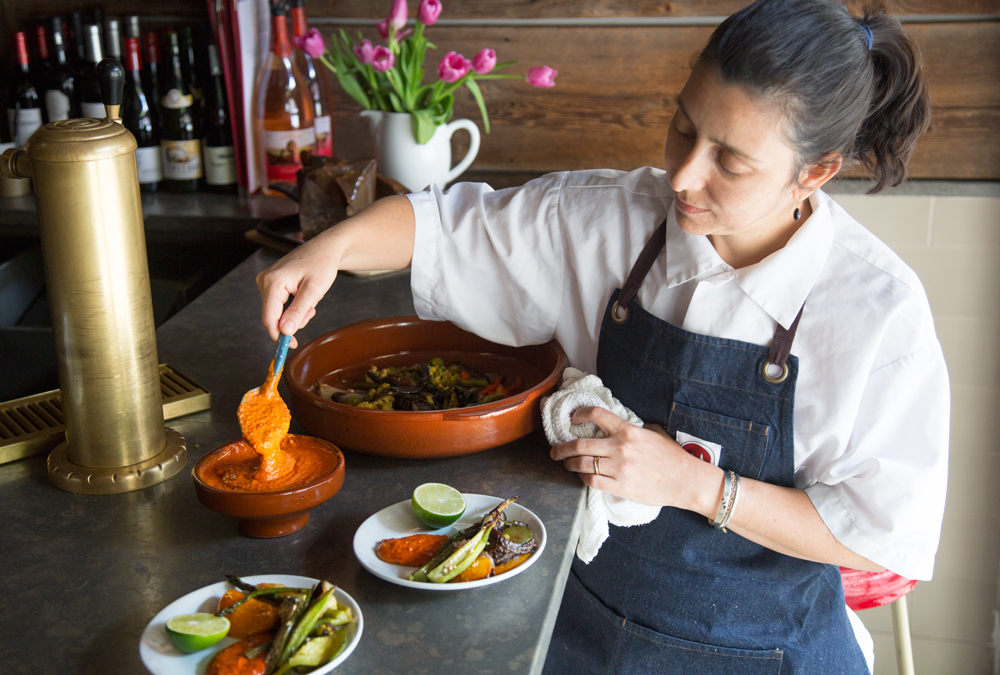
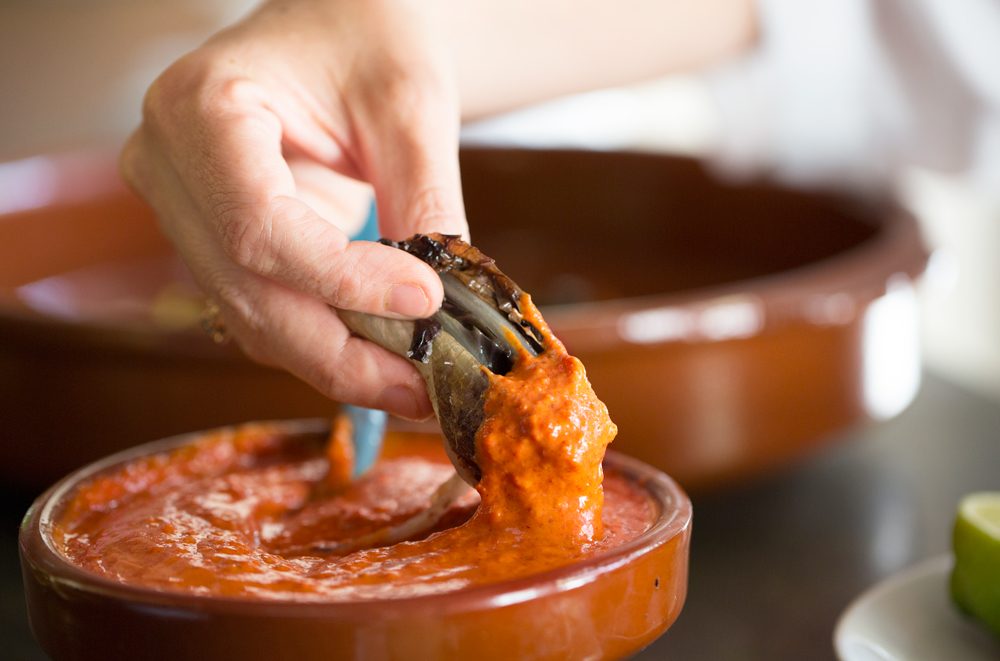
INGREDIENTS
- almond butter,
- anchovy,
- asparagus,
- bell pepper,
- broccoli,
- chicory,
- limes,
- okra,
- olive oil,
- paprika,
- peppers,
- Sherry vinegar,
- sundried tomatoes,
- tomatoes,
- treviso,
- zucchini
NOTES
You can use any dipping vegetable you like here, recipe just includes the veggies we had in season at the time.
RECIPE
DIFFICULTY
HARD
SERVES
4
PREP TIME
30 MINS
Romesco
-
1/2cuproasted pepper, Piquillo ideally
-
1/2cupsundried tomatoes in oil or rehydrated dry tomatoes
-
1/2cupwarm water
-
1/2cupsherry vinegar
-
pinch of sea salt
-
1tspsmoked paprika
-
1 1/3cupchunky roasted almond butter
-
1dry chile
-
1 1/2cupArbequina olive oil or more to taste
Roasted Vegetables
-
1brown paper bag
-
1cupBroccoli florets
-
2-3Treviso cut in quarters lengthwise
-
1cupokra, washed, patted dry and sliced in half lengthwise
-
4whole garlic ramps or green onions if ramps are not in season
-
1zucchini, sliced in quarters lengthwise
-
1bell pepper, sliced in 8 pieces lengthwise
-
1/2bunchasparagus, bottom 2” removed and discarded
-
2-3Anchovy fillets (optional)
-
Generous drizzle of olive oil
-
pinch of salt and cracked pepper
-
1-2limes, cut in half
INGREDIENTS
- almond butter,
- anchovy,
- asparagus,
- bell pepper,
- broccoli,
- chicory,
- limes,
- okra,
- olive oil,
- paprika,
- peppers,
- Sherry vinegar,
- sundried tomatoes,
- tomatoes,
- treviso,
- zucchini
Alex Raij and her husband Eder have birthed three New York restaurants, two children and an annual charitable food and wine festival called Txikifest that takes place in Chelsea every year. Within the culinary world, Alex is incredibly well respected – just utter the name of her Brooklyn restaurant La Vara, or her two Manhattan locations El Quinto Pino or Txikito, and writer, chef and foodie alike will swoon. Alex is generous and genuinely invested in bringing people together, wtether that is professionally, socially or aroud one of her many dining tables.
Alex’s salad is more magic trick than it is dinner. “Bag Salad” is resourceful, and creative, and something that you could definitely execute on the grill or in the oven.
Alex in Her Own Words
Julia: Can you tell me how you would describe the basic tenants of Basque cooking for those who are not familiar?
Alex: Simplicity, distinguished by a deft hand and super ingredients
Julia: How are Tapas meant to be eaten? In my family (specifically when we went to Txikito), as soon as we got the first dish, we liked it so much that we ordered 3 more of the same thing. I have a feeling this is not how you are supposed to do it…
Alex: That happens a lot. Each dish is a modest commitment and you can order as you go. Traditionally, you would go to multiple restaurants in search of a specific dish. We even tried to re-create the idea of a “poteo” or “tapas crawl” by opening new restaurants within walking distance of one another.
Julia: There are Jewish influences in your food. Aside from bagels and lox, Jewish food kind of gets a bad rap, but I love it. Who in your family was Jewish, and did they cook?
Alex: Both my parents are Jewish. I grew up eating stellar knishes, and amazing kreplach so I didn’t realize how bad it could be.
There was also Passover cake, made with almond flour. That is actually a quintessential Galician dessert called Torta Santiago.
Julia: Could you imagine a Spanish take on Gelfite Fish? I could…
Alex: Gefilte fish is a Sephardic dish, but I’m convinced it’s a form of Escabeche (a typical Spanish preparation of canned or potted preserved fish).
Julia: You own three restaurants and have two kids in New York City. Do you have time to cook with your kids, or do you not even want to think about food when you get home?
Alex: Both! Occasionally, I find myself starting to cook a loveless meal, and that’s when I engage my kids. We end up having fun, and together, we are capable of making a far tastier meal than I would on my own.
Julia: You are a natural connector of people. Every encounter I have with you ends with you leads me to some interesting person who you think I would connect with. Do you think this comes from a food culture of sharing and collaboration?
Alex: I meet so many fascinating people and sincerely want talented people to succeed. It excites me to make connections between the culinary world and other creative arenas since, I am inspired by people in so many different disciplines.
Julia: Are New Yorkers particularly difficult customers, or is it nice to know that they will always tell you the truth?
Alex: New Yorkers are excellent and loyal customers. They are infinitely open and perceptive. Without them, New York would be too tough a place for me to live. Life is not easy here so we try keep it really simple in all other aspects.
Julia: You are not a celebrity chef, but you use the notoriety of your restaurants as a platform to support causes you care about. Tell me about Txikifest, how it came about, how it has evolved and where you see it going?
Alex: Txikifest, our local street fair, is a way for us to celebrate the community around Txikito with the neighborhood. The fair features predominately Basque food, and the release of the new spring vintage of Txakoli (a slightly effervescent, dry Spanish white wine with high acidity and low alcohol content). There was never a doubt that the profits from Txikifest would be donated to charity, this year proceeds were donated to Edible School Yard NYC.
Julia: You met your husband while working in the kitchen of a NYC Spanish restaurant. Did you know that you would work together from the beginning? What is more challenging, raising kids or managing three restaurants?
Alex: I love working with Eder — he is great at what he does and that’s very sexy and fun to be around. When I met him, I didn’t know, but I hoped. It’s hard to manage work and home-life, but one compliments the other and in some ways, they require similar skills. I’m still learning how to do manage both areas of my life, and at the same time, to separate the two.
Julia: You made a “pantry staple” Romesco sauce, something that my readers could easily whip together without specialty ingredients. Are there one or two typical Basque ingredients that you think are worth the home chef seeking out and experimenting with?
Alex: Squid ink and Piquillo peppers